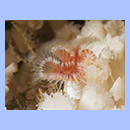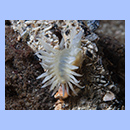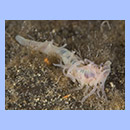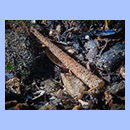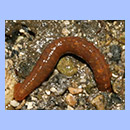Characteristics:
Bristle worms are segmented worms, usually less than 10 cm long. Each segment has pairs of legs (parapodia) usually used to move around. On each leg there are the bristles, tiny hair-like structures, that have named the class. Other than that, a wide range of body shapes are displayed among the bristle worms. Some live in tubes and may display beautiful fans when reaching for food floating by. Others are free living and crawl on the bottom or even swim around. The head is often well developed, compared to other annelids, including simple eyes, antennae and chemical receptors used to detect food.
Taxonomy:
Traditionally the bristle worms were divided into tubeworms and free-living worms. As is the case with many other animal groups, genetic studies has caught up with us, and the class Polychaeta is currently under revision. Again, appearance has failed to identify the taxonomy (the genealogical table).











